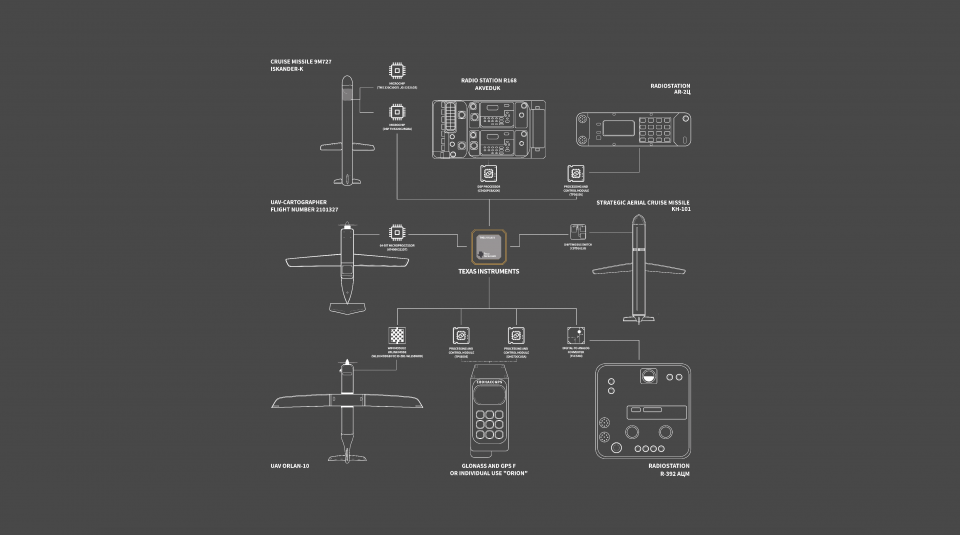
Bayraktar drones' success, Russian missiles' imperfections, Ukrainian Armed Forces' counteroffensive: Serhii Zgurets' column
Invading Russian forces will try to push back Ukrainian units in the Kryvyi Rih and Mykolaiv areas due to the massive use of artillery and aviation. But will they succeed? Most likely, these Russia's hopes are in vain
Bayraktar TB2 drones successfully destroys Russian equipment
The Ukrainian military destroyed several units of Russian military equipment with the help of the Bayraktar TB2 attack drones. Soldiers with the Ukrainian Armed Forces destroyed the Russian Akatsiya self-propelled artillery installation with the help of a Bayraktar drone. The Ukrainian military also successfully tested the 2B25 Burevestnik mortar and the Ural truck, which contained ammunition.
Such destruction of equipment is a good addition to the 4,500 infantry fighting vehicles and armored personnel carriers that the Ukrainian Armed Forces destroyed during the 6 months of the Russia-Ukraine war, which is almost a quarter of the initial arsenal of the Russians.
The Bayraktar TB2 UAVs also destroyed the Tor air defense system, which the Russians hid among the trees. These Tor systems were used as a means of combating drones, but everything turned out to be exactly the opposite. One gets the impression that the Russians are afraid to use their air defense systems because of the use of AGM-88 HARM missiles by the Ukrainian Armed Forces.
Bayraktars' strikes against Russian air defense ensure further suppression of the air defense of the Russian occupiers in the Kherson region and free the sky for the actions of Ukrainian aviation.
Active development of the Ukrainian Armed Forces' counteroffensive
The Ukrainian Armed Forces' counteroffensive is developing both in the south and the east. Foreign experts of the Institute for the Study of War note that the counteroffensive is noticeably developing in the south and east of Ukraine. Ukraine's Armed Forces are advancing in several directions in the western part of the Kherson region and have gained a foothold on the territory beyond the Siverskyi Donets River in the Donetsk region.
In the Ukrainian General Staff's evening summary for September 5, it is said that the Ukrainian military repelled enemy offensive attempts in the areas of the settlements of Bilohorivka, Hryhorivka, Pokrovske, Bakhmutske, Lozove, Spartak, Soledar, Zaitseve, and Semihirya. In the Kramatorsk direction, they had tactical success and defeated the invading Russian forces from the positions previously occupied by them.
Accordingly, it can be concluded that the hostilities are taking place beyond the usual delimitation of the contact line, especially if we are talking about the south. It can be assumed that in the future Ukraine's Armed Forces will push the Russians to the Dnipro River in order to narrow the strip currently controlled by the Russian enemy on the right bank of the Kherson region.
In the south, the prospect of splitting the Russian group into 2 separate cauldrons is possible. But that will have to wait. Such operations take weeks or months to complete. The breakthroughs of the first line of the Russian forces' defense by Ukraine's Armed Forces are significant, but the resistance of the Russian occupiers at the following lines affects the pace of advancement.
Ukrainian Armed Forces' successes in the south
Problems with the logistics of the Russians due to regular attacks on bridges in the Kherson region will lead to an extremely difficult situation for the Russian troops. In the future, the Russians will choose between retreat and capture, so the invaders will have to retreat across the river. This should also protect Kherson from destruction.
In addition, the liberation of our land from the enemy is not the only goal, because it is quite logical that one of the goals of the military leadership of Ukraine is to minimize our losses - to optimally preserve personnel for the successful implementation of future operations.
Pavlo Lakiychuk, head of security programs at the Center for Global Studies Strategy XXI, believes that Ukraine's Armed Forces do not have a strategic advantage yet, but they skillfully destroy the Russian occupiers.
"Ukraine seized the strategic initiative, which is a very important factor. But, unfortunately, we currently do not have the strategic advantage that is needed in order to expel the Russians. The strategy of the Ukrainian Armed Forces to destroy logistics routes and support is applied both in the east and in the south of Ukraine. We are not fighting for every meter, but we are destroying the enemy," Lakiychuk said.
Civil components in Russian missiles
The Russians use civilian electronics in their cruise missiles that are not controlled by the regimes. This allows the Russian occupiers to mass-produce this technique until a certain period, but it does have technical problems that affect the accuracy of the hit.

According to The New York Times, these findings are outlined in a new report published Saturday by Conflict Armament Research, an independent group based in the UK that identifies and tracks weapons and ammunition used in wars around the world. The research team studied Russian equipment in July at the invitation of Ukraine's government.
The researchers also found that the weapons used by Russia in Ukraine are often based on Western innovations, despite sanctions introduced as early as 2014.
Experts examined the remains of three types of Russian cruise missiles, including the newest and most advanced model, the Kh-101, as well as the newest guided missile, the Tornado-S. They all contained identical components labeled SN-99, which turned out to be satellite navigation receivers necessary for the missiles to fly.
This research makes it possible to trace the origin of the elements in order to limit the access of the Russian Federation to this elemental base.
- News














































